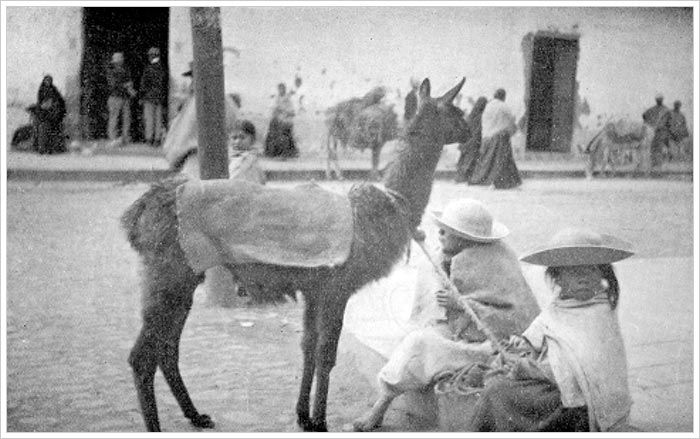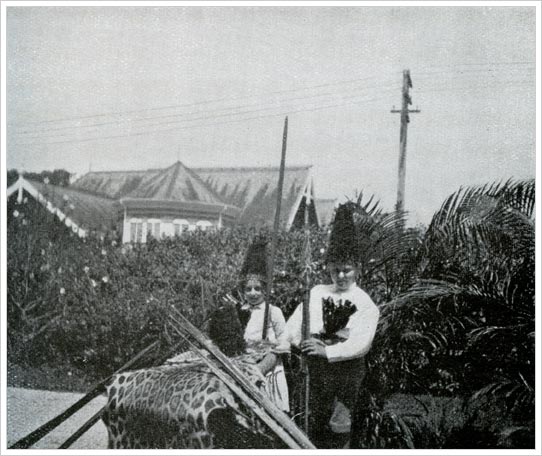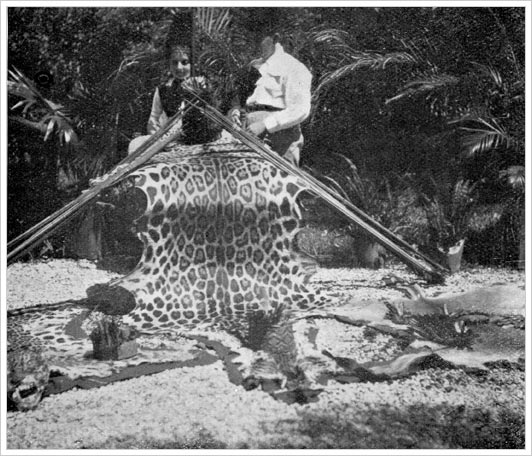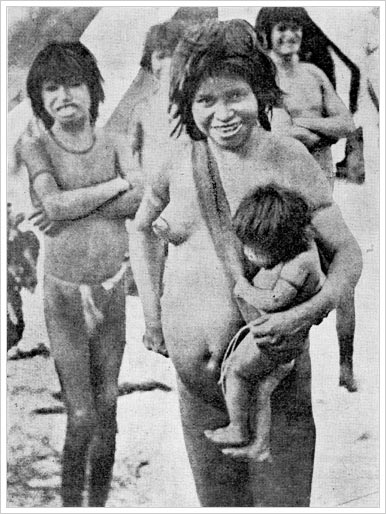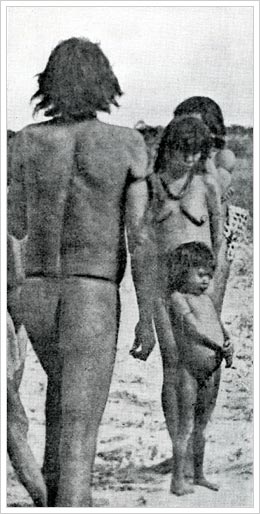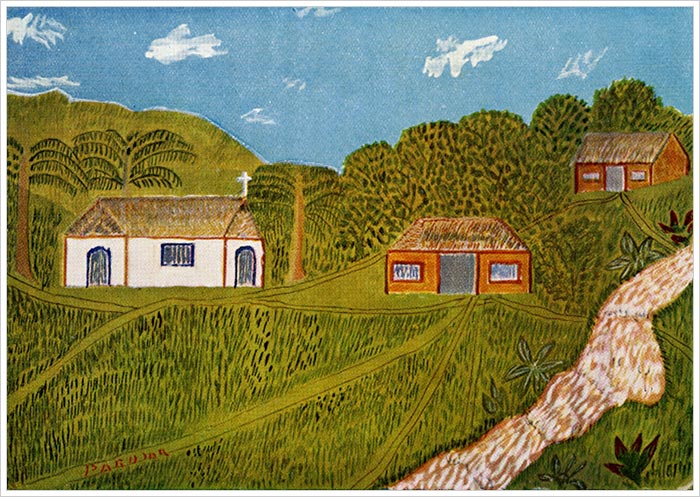The Caballo Cunco Treasure: First Attempt, Part 5
I spent most of the fortnight doing prospecting work on Mount Sapo, and shooting bush chickens, which were so plentiful that I got them whenever I wanted. One day I winged a big condor at long range, but failed to get him. In the valley just outside the forest, I several times saw beautiful golden and silver pheasants; there were never more than two at a time, and they were always at the same place. They were far too pretty for me to fire at, and exceedingly tame, as were the bush chickens; all that was necessary was just to go to the roosting trees at dusk, and take a chance shot. Two days after Zam got back, I sent him down the valley, to get half a bag of flour crushed by a water-mill, which only cost 3/6, 2/6 for the wheat and 1/- for the crushing. He returned in the evening with a tall, well-made Indian, who asked me to come down and see his boy, aged fourteen, who had a bad attack of malaria. I promised to do so next day, and the Indian returned to his home. The following day I took Zam to lead his mule and my chestnut horse, and the boy to carry my gun, as there were plenty of fat pigeons on the lower ground where the Indian lived. We walked leisurely down the valley along a good Indian path for about nine miles, taking three hours, and got there at 11 a.m. I saw the boy, and gave him some pills, and told his mother and father before I left to give him hot boiled cow’s milk and stop cramming spoonfuls of pearl barley and boiled maize down his throat, which I found they were doing. I shot six pigeons there, and they gave me some cabbages, young onions and a pine. On the way back, I enjoyed the lovely scenery on both sides of the valley. Next day I went to see the boy again, taking the white mule to ride back on, and the red roan mule to bring back two bags of potatoes. I found the boy improved, put him on weak tea and toast, and hot milk, and gave him a dose of quinine, leaving another dose for his mother to give him two hours after dark. I shot four pigeons, and the Indians gave me six fresh eggs and another cabbage. Next day I went down again with the horse, and found the boy much better, and sitting outside. I gave him some quinine, and made him some hot Liebig’s Extract, giving his mother a big pot, and telling her to make him drink three cups a day for four days, and then come up and let me know how he was. I also left a tin of tea and some sugar for her, and two pigeons to grill for the boy. They were very grateful, and wanted to give me all sorts of things; I accepted a young kid, and had it done on the spit next night for dinner.
Four days afterwards, the Indian came with a large bunch of bananas, his wife with two bottles of milk and a fowl, and his little girl with some pines and eggs. I remonstrated with him, but he said I had cured his boy, and so long as I was here it was his duty to bring me supplies, a sure proof that these people are grateful and easy to get on with if properly treated. At the appointed time, we started off to the home of José Maria Ampuera, getting there early in the morning on the second day. The old man told me he would show the hill to anyone coming from a daughter of General San Roman. He said his father had told him that this was the place, and that his grandfather had been with the priests, Gregorio and San Roman, when they hid the treasure. His grandfather and father had been very well off, and owned land and cattle, and he himself had inherited land and cattle from his father. The Bolivian Government took away his land, and eight hundred of his cattle, leaving him only with his present holding and fifty head; this was in Malgarejo’s time, and for that reason, when President Malgarejo came down to the River Sacambaja with half a regiment of soldiers to dig and hunt for the treasure, he refused to show them the place. He showed me afterwards where President Malgarejo prospected for it; they were not very far off, but on the wrong side of the river. José told me how fifty years ago he and his sons found a gold bell weighing 40lbs., which they sold, and bought land and cattle, but in uncovering the tapada some rocks fell and killed one of his boys; he and his other son took this as a bad omen and never tried to find any more. He promised to show me the place where they found it. The reason he had not sent in for his money from the agent of Father San Roman was that after the priest died he did not know to whom to apply, and he thought the family in Lima would be sure to send something in to him.
José thought it advisable that we should go separately to the place where the treasure was, as if people were to see us travelling together they might suspect something and follow us and the law of treasure is very stringent. So he suggested I should go a roundabout way along the valley of the Calatranca Range, cross over the highest pass, and make for the River Sacambaja below, and he would go by a more direct and easier path and meet me down below on the banks of the Sacambaja. I left the cook to go with the old man, and sent Zambrana to Cuti to get a sheep for 4/- and follow on with the old Indian in two days’ time, while Manuel, his boy and the two other men went the other way with the mules and donkey and horse. We camped that night near the path over the mountain, but soon after we had pitched the tents and let loose the mules, with the chestnut horse as bell mare, Manuel brought me the news that there were other travellers evidently going the same way as we were, and that he could see their fire behind us, but he thought it did not matter, as they would now follow us over the high pass. Where we camped there was no forest, only a few hardy trees and bushes growing in the gully; we were 15,200ft. up, very near the snowline. There was a light layer of frozen snow near the camp on either side of the gully, plenty of long tufty mule grass growing all about, and a stream of very cold water with ice and snow on the edges. After the sun went down it got very cold; but we had a good Irish stew for supper, and plenty of everything, and with two big fires going, one near my tent, the other near the men’s, we passed a comfortable night. Next morning after a bath in the cold stream I dressed in front of a big fire, made a good breakfast and started off at 9.30, riding my mule, but getting off at steep places. The path was one of the Inca tracks, broad and well made, cut out of rock, with very gradual inclines, and I was able to ride most of the way. At 11 a.m. the aneroid registered 17,000ft., and at 1 p.m. we got to the top of the pass; the last hour and a half going over frozen snow. I wrote down 19,000ft. in my diary for the height of the pass, and was probably not far off the mark, as the aneroid does not register over 17,000ft., and Lisandro Mendizabal, the wealthy owner of Cuti and the Alcalde of the district, afterwards told me that was very likely the height as the top of the mountain was 21,500ft., and always covered with snow. We were not followed any more. From the cairn of stones on the summit we saw an immense expanse of country; nobody was to be seen, no dwelling and no living thing, except some big white collared condors sailing magnificently in the clear air without any apparent movement. Down the hill we followed the broad Inca and Jesuit road, which is cut out of the rock and in places runs along the extreme edge of the precipice, and after ten miles, of which the last few miles were through forest, reached the River Sacambaja.

